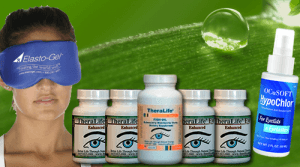Watery eye syndrome overview
Watery eyes can occur for many reasons. Watery eyes can be caused by allergies. In other cases, the cause may be more serious. Sometimes, it’s a sign of a medical condition. Watery eyes could be caused by anything from a small dust particle to a scratch or sore on the eyelid. There are several treatments for watery and red eyes, including medication or surgery. The best way to address this problem is to find out about the causes and get treated.
Best Treatment For Watery Eyes- TheraLife
Questions? Call toll free 1-877-917-1989 US/Canada

Symptoms of Watery Eyes
Often, the symptoms of watery eyes can be caused by seasonal allergies. These conditions cause your eyes to become itchy and lubricated, which can worsen your condition. For these conditions, you can take antihistamines to relieve the irritation. Some conditions like a disease called conjunctivitis can also cause watery and reddish eyes. Conjunctivitis may be a condition where the tear ducts are inflamed.
When to See a Doctor for Watery Eye Syndrome
Seek medical attention if you have watery eyes that last more than two days. You may need more serious treatment if there are other symptoms, such reddening or burning. The main goal of treatment is to treat the underlying cause. You can take antihistamines if you have allergies. Improving your air quality can prevent allergies from developing. Chronic diseases that affect the production of tears can also lead to watery eyes. However, treating these conditions can help alleviate the symptoms of dry eyes and inflammation.
Causes of Watery Eye Syndrome
Blocked tear ducts are the most common cause for watery eye syndrome. The tear glands, which is responsible for the production of tears, are the drainage system in the eye. When the ducts become blocked, the tears overflow and can cause the eyes and skin to become red, itchy and/or irritated. Grass, tree and pet pollen are the most common causes. Indoors, it is caused by mold, dust mites, and dust.
Watery eye syndrome may also be caused due to viral and bacterial infection. The ducts can be described as tiny holes in the eyeball, which drain tears into a nasal cavity. Infections can also result in itchy, watery eyes. While most people do not need to take antibiotics, contact lenses may increase the risk of getting this infection. If they experience severe dryness, redness, or other symptoms, they should see a doctor. Dry eyes can also be caused from other underlying conditions that can be treated.
There are several things you can do if you have watery eye syndrome. A doctor might recommend medication for a variety different reasons. A blocked tear duct can result from hay fever, as well as medications. An infection should be reported to your doctor immediately. You can treat an infection with a simple home remedy. Antibiotics will be helpful if there is a blockage.
Permanent watery eyes should be seen by a doctor immediately. If you suspect that your watery eye syndrome is a sign of another health problem, consult your doctor immediately to get the right treatment. Watery eyes are not uncommon. However, they could indicate a more serious condition. Contact your doctor immediately if your eyes are watery or persistent. It may be a simple infection, or something more serious.
Conclusion
Poor eyelid function can cause chronic watery eyes. Watering can be increased by the drooping of your lower eyelid. This condition can increase the risk of infection in the eyes. Others have problems with their eyeslids which cause watery eyes not to drain properly. Dry eyes and allergies can also cause constant watering. If you suffer from any of these conditions, you should seek medical attention for them. Excessive tearfulness can be a sign you may have a more severe condition.
Poor eyelid function is a cause of watery eyes. If the eyelids are not working properly, tears must be pushed out to the corners of the eye for drainage. The problem with drooping lower eyelids can cause watery eyes. It can dry out the eyes and increase the chance of developing an eye infection. For a precise diagnosis of persistent watery eyes, consult an ophthalmologist.





